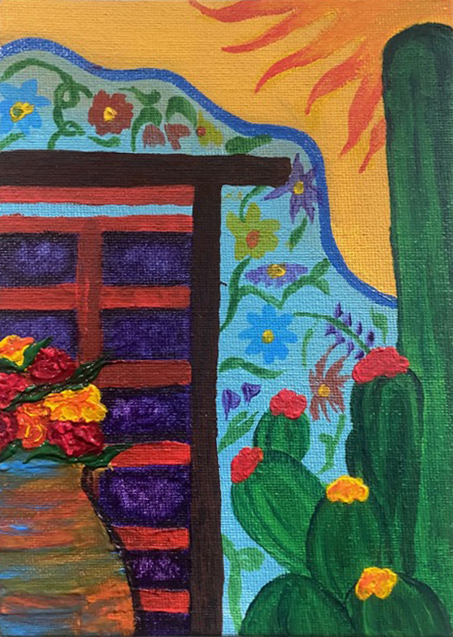Challenges in Undergraduate Art Education

The university environment creates a unique intersection of financial, social and academic stressors. Within our research, students identified specific personal and structural issues in their undergraduate experiences. These issues are often exacerbated within arts education, an environment where subjective, creative student work expectations are uncomfortably fit into broader, general university standards. This post seeks to reflect on these experiences and discuss the complex role of creative expression in alleviating these circumstances.
Accessibility and Discrimination in Fine Arts Departments
My first interview was with Maddie Jade, a multimedia artist pursuing a fine arts degree. Maddie, as a black and queer student, discussed the social and academic obstacles they face daily.
“I’ve seen other black students experience racism, I’m seeing other students of color experience racism, or I’ve seen other queer students experience homophobia or transphobia… it’s unfair because you could have someone who is so talented and so capable to have such a bright future but you’re putting [them] in an environment where they are being treated differently for things that are out of their control.”
While universities continue to make efforts to diversify their student bodies, art departments remain homogenous, catering to white, middle-class students. Maddie continues, “The inclusivity aspect [of the University] almost feels performative… [The art department] is not necessarily unwelcoming, but I think it’s more intimidating for me because I think subconsciously [professors and students] do still make presumptions. It can be a difficult environment feeling like you can’t relate to your peers.”
More concerns lie in the structure of art departments themselves. Students are expected and encouraged to undertake excessive personal commitments for their craft. “It can get to be a very toxic environment… our faculty, plus our colleagues are constantly pushing ourselves to degrees that we really shouldn’t be going to in terms of perfection… A couple of my friends… [have to take medication] for performance anxiety” says Leah, a music performance major. The situation worsens in the discussion of academic accommodations. “[I’ve] had some professors who haven’t been the most understanding… of [my academic accommodations] …. I’ve had some professors who do not see me as a person and only [see] me like a product of what I can do and what I can make for the class…It’s frustrating,” says Maddie Jade.
When taking action against these issues, participants describe the long, exhausting correspondence between campus DEI (Diversity, Equity & Inclusion) and disability offices, amounting to partial solutions or the claim being dropped completely. This issue of student advocacy resonates beyond art departments to the general student population. “[Student-led organizations] on campus really fill [the resource gap]. …there are avenues to take, though it’s never the formal avenue… You have to be in the know… [I’m] lucky enough to be at the Women’s College, but what about everybody else…where do they go…They have to build their own network,” says Samson, a political science major.
Creative Expression as a Safe Space
Fine arts students hold a complex relationship with their art as both the source and space to escape their challenges. For Maddie Jade, their undergraduate experience has inspired their future focus in the arts: “I really want my work to be meaningful because social justice…is super important to me…and looking at intersectionality and resource awareness… I want to do something with my art that has a social impact.” For non-fine arts students undergoing similar issues, art creates a valuable space to express themselves. “In college, I’ve done a lot of [art and creative work] surrounding Native American identity …to figure out how I exist as a Native American at a PWI [predominately white institution]… it’s a difficult emotional challenge but I’ve been working through it, and I’ve been able to use my creative expression in class for the projects to do [it].” says Grace C., a psychology major. Throughout our research we have found having access to creative expression contributes positively to the lives of students who participate. However, merely having this option as an outlet or means of decompression does not address the source of much larger and more persistent issues in higher education.
Check out the other posts in this series:
- Creative Expression and Well-Being Among Undergraduate Students
- The Pursuit of Art and Higher Education
- Finding Balance Within Creative Expression and Life as a Student
This blog series is a summary of qualitative research study, Creative Expression and Well-Being Among Undergraduate Students, conducted at the University of Denver by undergraduate students Sofia Pineda-Velez, Jasmin Storer, Grace Chavez and Sam Searfoss through the Leadership department with the Colorado Women’s College Leadership Scholars. The study investigated arts-based education in the university setting through student interviews and the relationship between creative expression and mental well-being.



